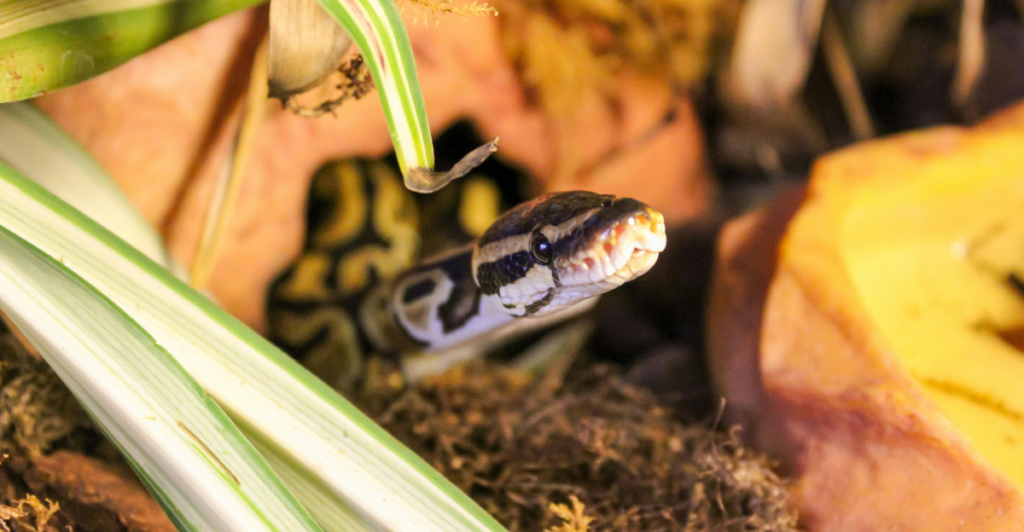
Snakes are often feared and misunderstood creatures, triggering a primal response in many. Despite this, they are fascinating reptiles with unique adaptations. Of the 3,000 snake species worldwide, only 600 are venomous, and even fewer pose serious threats to humans. Unfortunately, climate change and habitat loss have pushed many of these rare snakes toward extinction, threatening the delicate ecosystems they support.
The Tancitaran Dusky Rattlesnake

Found in West-Central Mexico, the Tancitaran dusky rattlesnake thrives in pine-oak forests at altitudes above 1,500 meters. Males can grow up to 68 cm, while females are typically smaller. This venomous snake uses its heat-sensing organs to hunt but remains inactive at night due to lower temperatures. Volcanic activity, forest fragmentation, and cartels continue to threaten its habitat, pushing it toward extinction.
Wagner’s Viper

Discovered in 1846 and once believed extinct, Wagner’s viper inhabits northwestern Iran and eastern Turkey. It was rediscovered in 1986 but quickly became critically endangered due to viper collectors hunting it. Its venom is not fatal but causes severe pain. Conservation programs like the Species Survival Plan aim to protect the species, but habitat loss continues to endanger its survival.
Santa Catalina Island Rattlesnake

Unique for lacking a rattle, the Santa Catalina Island rattlesnake adapted its silent tail to become more effective at hunting birds. Native to Isla Santa Catarina, its habitat covers less than 100 km² and is further threatened by feral cats. Despite being a capable climber, this critically endangered snake prefers the ground, where it remains vulnerable to environmental changes.
The Short-Nosed Sea Snake

The short-nosed sea snake, or Sahul reef snake, lives off the coast of northwestern Australia. Measuring 60 cm, it rests underwater but can also be found on reef flats. Rising ocean temperatures are driving its population decline, with scientists rediscovering the species at Ashmore Reef in 2021 after a 23-year absence. This discovery offers renewed hope for its conservation.
Ross’ Wolf Snake

Native to Dalupiri Island in the Philippines, Ross’ wolf snake was discovered in 1990. Little is known about its ecology, but its cylindrical body and flattened head make it easily identifiable. Habitat degradation caused by ranching activities threatens this critically endangered snake. With no conservation efforts in place, its future remains uncertain.
The Aruba Island Rattlesnake

Endemic to Aruba Island in the Caribbean, the Aruba Island rattlesnake is light brown with pinkish hues that match its arid environment. Measuring up to 88 cm, it preys on birds, rodents, and lizards while competing with larger boas. Despite its fatal venom, the snake rarely bites unless provoked. Strict protections and conservation efforts aim to preserve the remaining 230 individuals.
The Alcatrazes Lancehead

The Alcatrazes lancehead, found on Ilha Alcatrazes in Brazil, is a pitviper with highly venomous bites. Environmental changes forced this species to eat centipedes and cockroaches, causing it to shrink to a maximum size of 48 cm. Originally connected to the mainland, rising sea levels isolated this population. Today, their shrinking habitat makes survival increasingly difficult.
The Striped Blind Snake

The striped blind snake, native to Southeast Asia, is a burrowing species rarely seen on the surface. Its alternating black and white stripes give it an intimidating appearance. Believed extinct for 172 years, it was rediscovered in 2019 in Singapore. However, the specimen found was already dead, underscoring the species’ elusive nature and mysterious decline.
The Albany Adder

The Albany adder, a small viper from South Africa, remains shrouded in mystery. At only 27 cm long, it hides under rocks and is most active during twilight hours. Since its discovery in 1937, only a dozen individuals have been documented, with the last confirmed sighting in 2017. Scientists remain uncertain about the severity of its venom due to its rarity.
The Antiguan Racer

Once considered extinct, the Antiguan racer was reduced to just 50 individuals by the 1990s. Conservation efforts eradicated invasive predators and allowed its population to rebound to over 1,100 across several islands. Although slow and non-venomous, this snake remains critically endangered due to ongoing habitat loss caused by urban development.
The St. Lucian Racer

With fewer than 20 individuals remaining, the St. Lucian racer is the world’s rarest snake. Found on a small islet in the Caribbean Sea, it shares its habitat with critically endangered lizards. Once common, its decline began after the introduction of Asian mongooses in the 19th century. Despite its mild temperament, this snake faces an uncertain future.
Preserving These Rare Snakes

The world’s rarest snakes are disappearing due to habitat loss, climate change, and human interference. While conservation efforts offer hope for some species, others remain critically endangered with no protections in place. Preserving these unique creatures is essential for maintaining ecological balance and preventing their quiet extinction.
Stay connected with us for more stories like this! Follow us to get the latest updates or hit the Follow button at the top of this article, and let us know what you think by leaving your feedback below. We’d love to hear from you!







